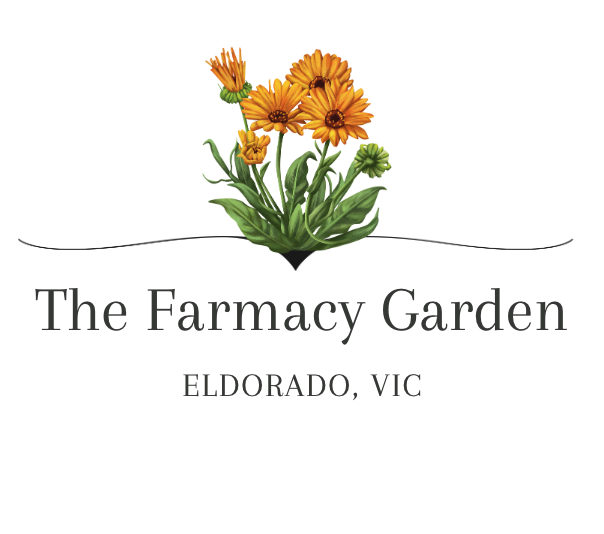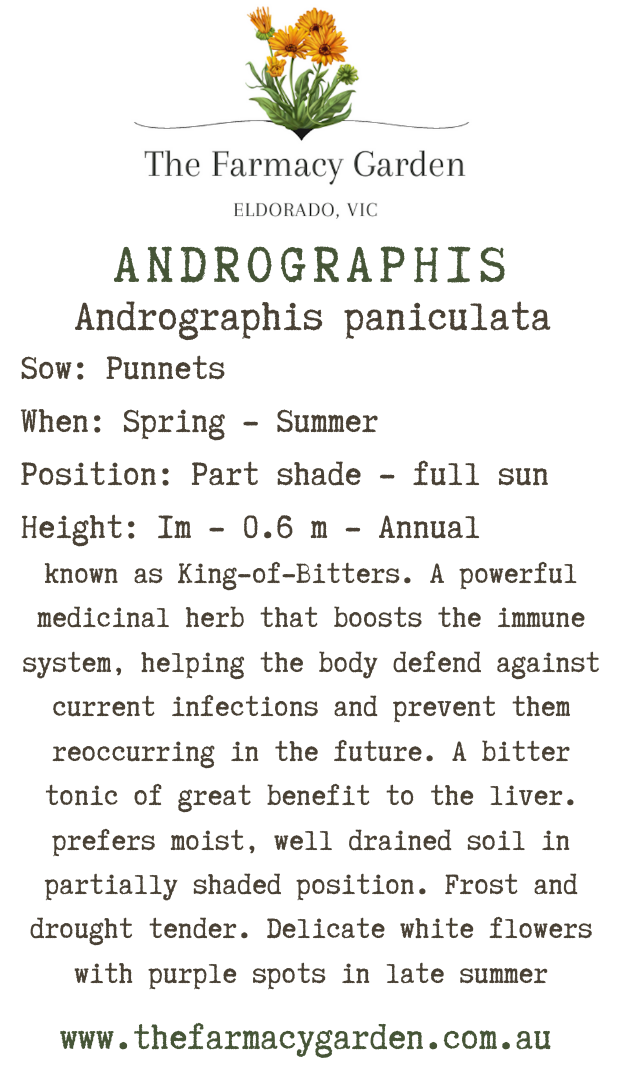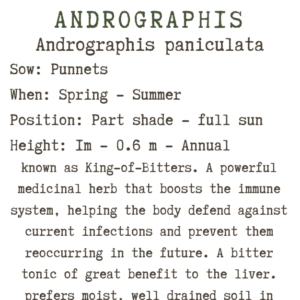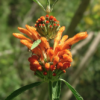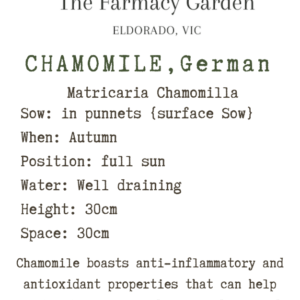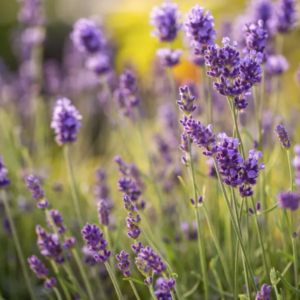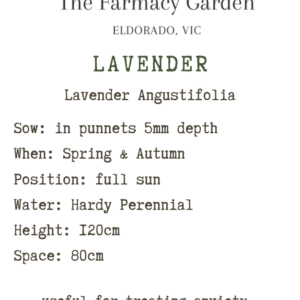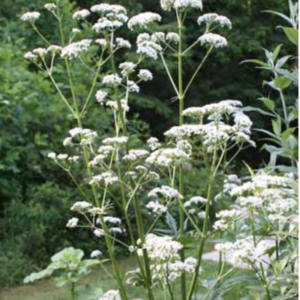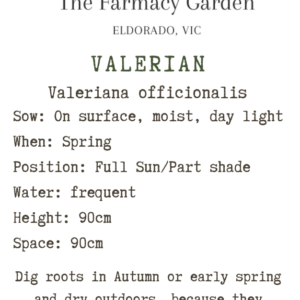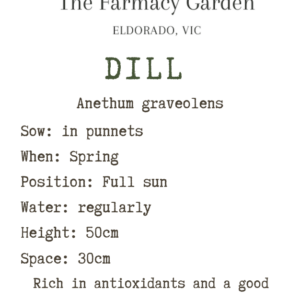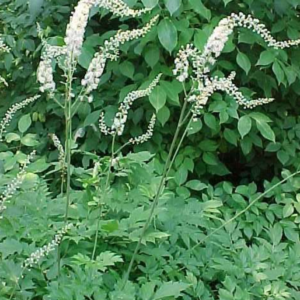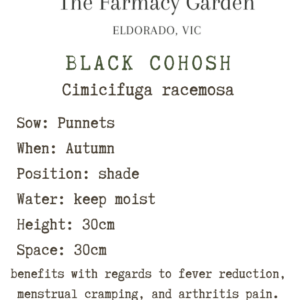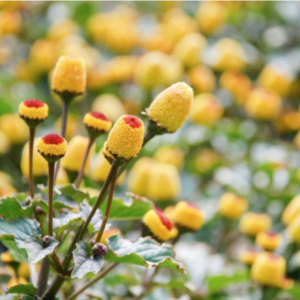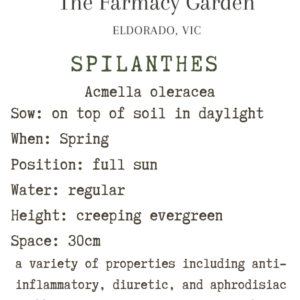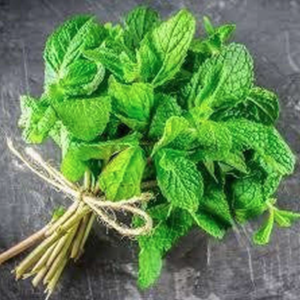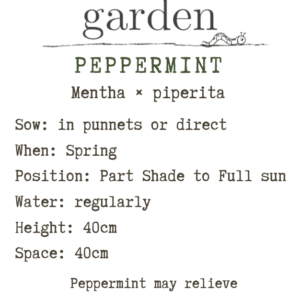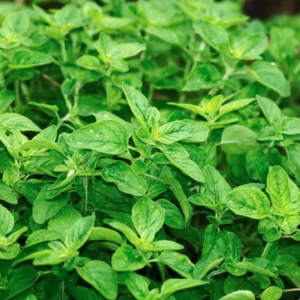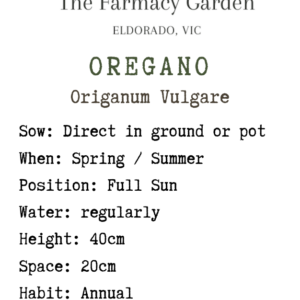Andrographis Seed, Andrographis paniculata
$6.50
This King of Bitters (Andrographis paniculata) hails from Southeast Asia, where the leaves, roots and, in some cases the whole plant, have been used as a treatment for bacterial infections and other diseases.
This King of Bitters (Andrographis paniculata) hails from Southeast Asia, where the leaves, roots and, in some cases the whole plant, have been used as a treatment for bacterial infections and other diseases.
GROW: Use a sandy mix, press seed into surface, keep warm, moist and in the light. An approach that is claimed to speed germination is to soak the seeds in 40 degree C water for 5 minutes, then strain out and plant as above. Annual but long-season, fully maturing in 160 days. Can be harvested for the active portion (leaf) well prior to that time. Often self-seeding in the right conditions (extended warm conditions). May go from early flowering back into vegetation phase and then flower again in late season. Dry conditions tend to stimulate flowering and seed production, while moist conditions tend to stimulate leaf growth. The crop matures after 120 days of sowing. It is harvested when most plants are in bloom. It is at this stage, the plants should be uprooted. However, a small lot of healthy plants should be left in the field for seed production. When the fruits become mature, these should be picked up and dried in the sun and seeds are collected. The seeds should be kept in open sun for complete drying. After this, these are stored in air-tight containers for next sowing.
HARVEST: The whole above ground plant should be harvested when flower begin to cover the plant, this is when the plant is producing the highest concentration of the principal andrographolide. Plants can then be dried for later use, the plants should be uprooted. However, a small lot of healthy plants should be left in the field for seed production. When the fruits become mature, these should be picked up and dried in the sun and seeds are collected. The seeds should be kept in open sun for complete drying. After this, these are stored in air-tight containers for next sowing.
USE: Andrographis has been mostly studied for colds, flu, and upper respiratory infections. Andrographis paniculata is used in traditional medicine to treat infectious diseases and fevers. In the lab, it exhibits antibacterial, antioxidant, anti-inflammatory, anticancer, and immunostimulating properties.
Related products
Flower Seeds
Flower Seeds
Medicinal Herb Seeds
Medicinal Herb Seeds
Medicinal Herb Seeds
